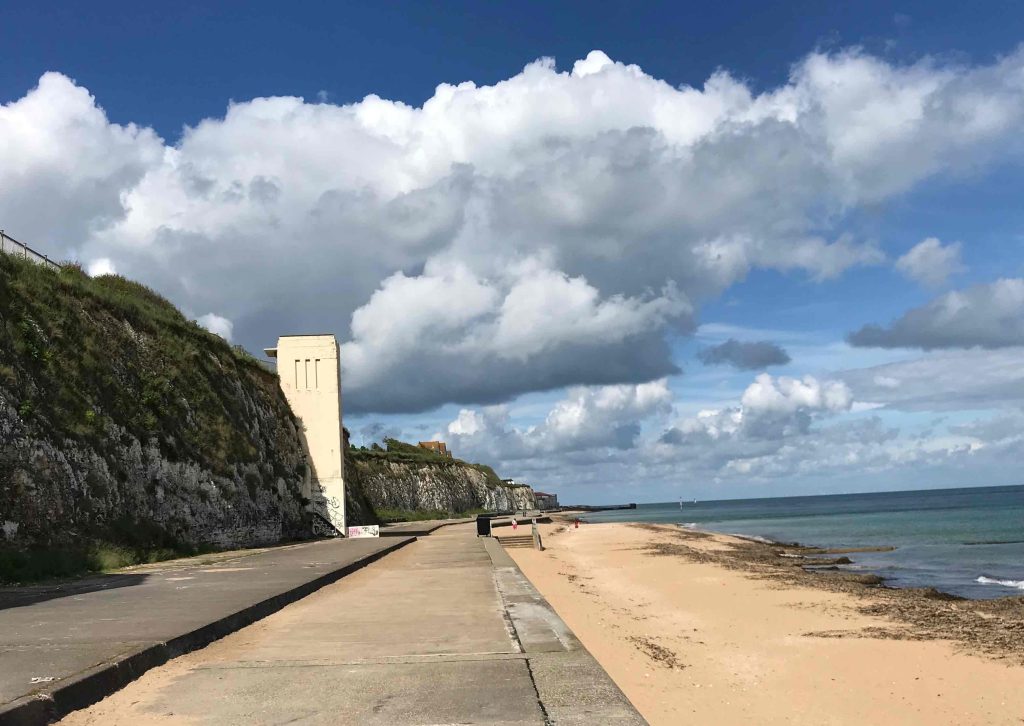OTD in early British television: 10 June 1938

John Wyver writes: On the evening of Friday 10 June 1938, studio A at Alexandra Palace hosted artist couple John Piper and Myfanwy Evans presenting A Trip to the Seaside, a short talk about ‘things seen during a recent visit to the seaside’. Included were paintings and drawings by Piper and by their friends Paul Nash and Edward Wadsworth, as well as poetic extracts from Max Beerbohm’s ‘The seaside in winter’, John Meade Faulkner’s ‘Moonfleet’ and, perhaps inevitably, ‘Dover beach’ by Matthew Arnold.
John Piper had been a regular AP presenter in the first months of the service, introducing paintings and sculptures borrowed from London’s commercial galleries. Myfanwy Evans had also appeared on screen before, just once in July 1937, when she recounted a bicycle journey through the Chilterns, which was also illustrated with photographs and articles found along the way.
In the introduction to their rich 2009 collection Modernism on Sea editors Lara Feigel and Alexandra Harris write:
One of the best guides to England’s coastal heritage is John Piper, who wrote appreciatively, all through the 1930s, about the marriage of tradition and modernity in nautical style. Looking at the simple, functional shapes of lighthouses and fisherman’s huts, he found a language of design which was rooted in the vernacular of particular English places, but which was consonant, too, with the pared-down world of contemporary abstraction. The modern painter, he tought, might have much to learn at the beach…
The seaside shapes the work of artists, and in turn artists shape the seaside with their own preoccupations. Piper was interested in the coast’s elastic capacity to harmonise strong forms with messy detritus; he was always drawn to the pot-luck offerings of low tide… He admired both the quiet simplicity of a white-washed cottage and the chatty show-off exuberance of Victorian villas.
At the start of 1938 the Architectural Review published Piper’s essay ‘The nautical style’ which Frances Spalding discusses in her fascinating contribution to Modernism on Sea, and A Trip to the Seaside must have drawn on this text which Spalding proposes ‘revealed his full responsiveness to the seaside manner in all its cultural manifestations.’ For Spalding, the significance of the essay
lies in the fact that it was ahead of its time in dealing with issues of style under the generous embrace of visual culture. Whereas Paul Nash, whom Piper regarded as his ‘artistic father’, saw in the modern movement a recovery of the architectural values of classicism, Piper was to evolve a rougher, more demotic and inclusive aesthetic, operative over a wide visual spectrum.
Piper developed his ideas in a dialogue with Architectural Review assistant editor J.M. Richards, who was a commissioner of his writing and a close friend of both the artist and Myfanwy Evans. As was Television’s Talks producer Mary Adams, who invited the couple to contribute A Trip to the Seaside. The result, of which frustratingly no script or photographs appear to exist, should surely have been a modest contribution to the ‘modernism on the hill’ that AP encouraged.
For more, read Janet McKenzie’s Studio International article, ‘John Piper in the 1930s – abstraction on the beach’.
Image: author’s photo of the promenade and beach near Margate.
[OTD post no. 175; part of a long-running series leading up to the publication of my book Magic Rays of Light: The Early Years of Television in Britain in January 2026.]
Leave a Reply